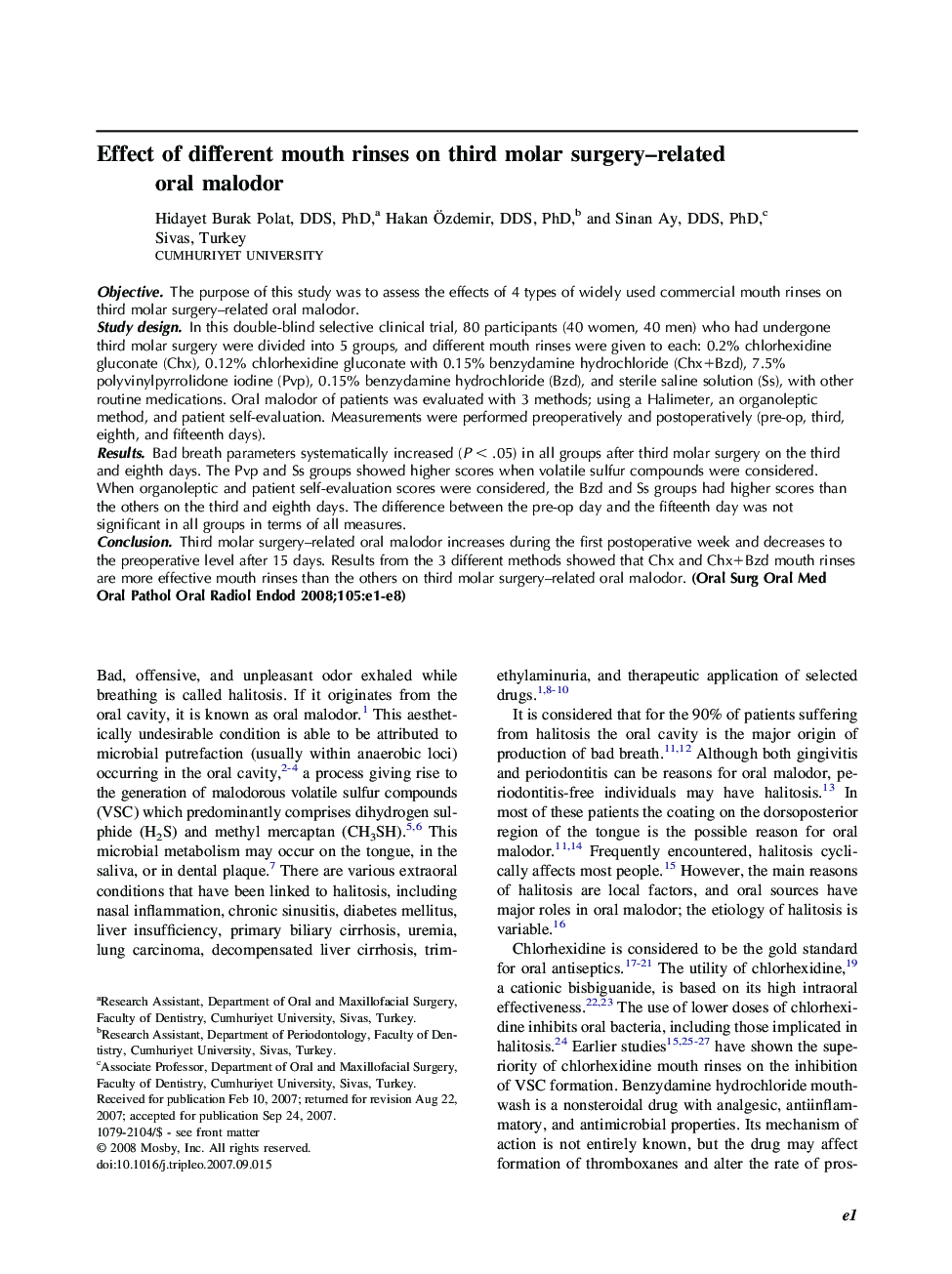| Article ID | Journal | Published Year | Pages | File Type |
|---|---|---|---|---|
| 3169018 | Oral Surgery, Oral Medicine, Oral Pathology, Oral Radiology, and Endodontology | 2008 | 8 Pages |
ObjectiveThe purpose of this study was to assess the effects of 4 types of widely used commercial mouth rinses on third molar surgery–related oral malodor.Study designIn this double-blind selective clinical trial, 80 participants (40 women, 40 men) who had undergone third molar surgery were divided into 5 groups, and different mouth rinses were given to each: 0.2% chlorhexidine gluconate (Chx), 0.12% chlorhexidine gluconate with 0.15% benzydamine hydrochloride (Chx+Bzd), 7.5% polyvinylpyrrolidone iodine (Pvp), 0.15% benzydamine hydrochloride (Bzd), and sterile saline solution (Ss), with other routine medications. Oral malodor of patients was evaluated with 3 methods; using a Halimeter, an organoleptic method, and patient self-evaluation. Measurements were performed preoperatively and postoperatively (pre-op, third, eighth, and fifteenth days).ResultsBad breath parameters systematically increased (P < .05) in all groups after third molar surgery on the third and eighth days. The Pvp and Ss groups showed higher scores when volatile sulfur compounds were considered. When organoleptic and patient self-evaluation scores were considered, the Bzd and Ss groups had higher scores than the others on the third and eighth days. The difference between the pre-op day and the fifteenth day was not significant in all groups in terms of all measures.ConclusionThird molar surgery–related oral malodor increases during the first postoperative week and decreases to the preoperative level after 15 days. Results from the 3 different methods showed that Chx and Chx+Bzd mouth rinses are more effective mouth rinses than the others on third molar surgery–related oral malodor.
